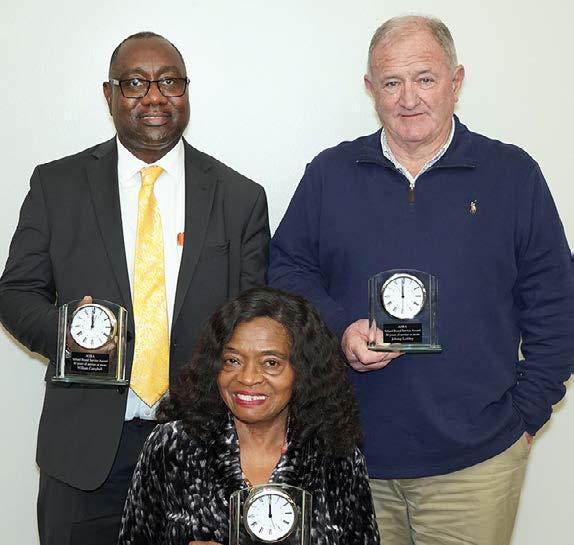
13 minute read
Discover how he did it.
from March 2023
by ASBA
Learn more about this visionary businessman and other great American capitalists. Explore the Stephens “This Is Capitalism” video series.
Watch it now

Since the early 1930’s, Stephens has offered broad-based knowledge and sound advice with the objective of meeting the long term financing goals of Arkansas public schools. We are proud to support our partner, Economics Arkansas, who trains PreK-12 teachers how to incorporate principles of economics and personal finance into the classroom curriculum. Economic education is real life because all young people will grow up and become part of the marketplace. Through training teachers, the multiplier effect is achieved every school year and impacts the lives of new children.
Utilizing the iNSPIRE program based on the series, This is Capitalism, produced by Stephens, teachers are trained by Economics Arkansas with a classroom curriculum for teaching children the value of the free enterprise system. Young people grow and learn the responsibilities of financial literacy and economics that will benefit them all of their lives. For more information, visit www.thisiscapitalism.com and www.economicsarkansas.org
Attention Educators:
As part of our commitment to ensuring that all children in Arkansas understand the importance and contribution of our free enterprise system, Stephens partnered with Economics Arkansas to develop lesson plans to accompany our “This Is Capitalism” film series. For more information, contact Marsha Masters marsha@economicsarkansas.org are also required to complete a plan. Any district that receives more than $500,000 in Title I funds, which is about half the state’s districts, is required to set aside 1% for family and community engagement. Districts and schools are required to jointly develop expectations and objectives and have plans for building staff and parent capacity. Moore said the Mountain Pine School District has events for families tied to the curriculum and themed to coincide with the calendar. Those include a “Most Mathematical Time of the Year” event in winter and a “Super Science Spring Fling.” Districts must coordinate their efforts and ensure an engagement infrastructure is in place. Districts must also evaluate their efforts and spend accordingly.
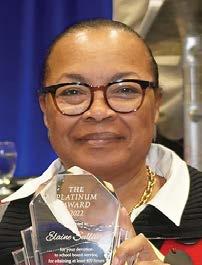
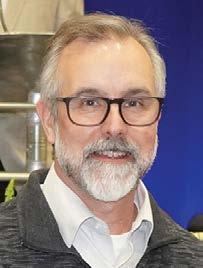
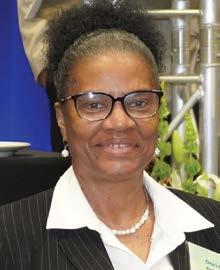
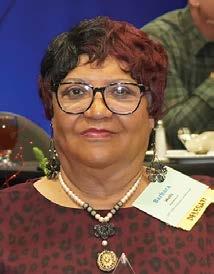
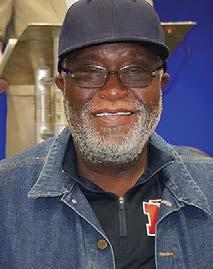
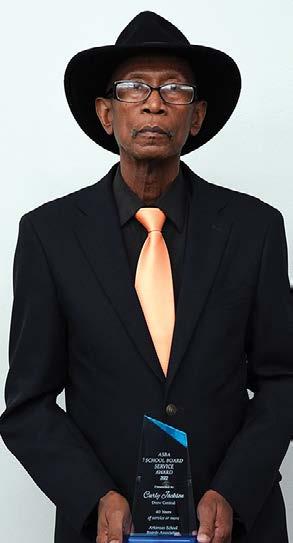
El Dorado onboards new teachers
In another session, attendees learned how to communicate with another important constituency – new teachers. The session was led by El Dorado Superintendent Jim Tucker and Stephanie Lowery, the district’s Teacher Induction Program leader. Lowery had come to the teaching profession at age 39 after previously training employees at restaurants.
She saw the new position as an opportunity to do both.
The district has 89 new teachers in the three-year program supported by 52 mentors, 39 of them being a current teacher. New teachers and mentors meet once a week for at least 40 minutes, with a time log filled out and notes detailing what additional resources might be needed. They meet less in years two and three. Lowery said that training the mentors has been an important part, because teaching adults is harder than teaching students.
The district had a mix of 50% traditionally educated teachers and 50% nontraditional teachers, so it designed its program to work with both. The program focuses not just on coaching for support but also coaching for development. Last year, the district had its first three-day teacher workshops prior to the school year’s beginning. The team considered what it would be like to be a new teacher and what everyday concerns they may have, such as where to park. They wanted the new teachers’ first experience with the district to be intentional, they wanted to create a welcoming climate, they wanted to introduce them to the Teacher Excellence Support System, and they wanted workshops to model best practices for teaching. Surveys of new teachers taken a couple of weeks into the school year found they succeeded in creating a welcoming, positive atmosphere. The program also does “just in time” workshops coinciding with school events and requirements, rather than unloading everything on the new teachers at the beginning of the year.
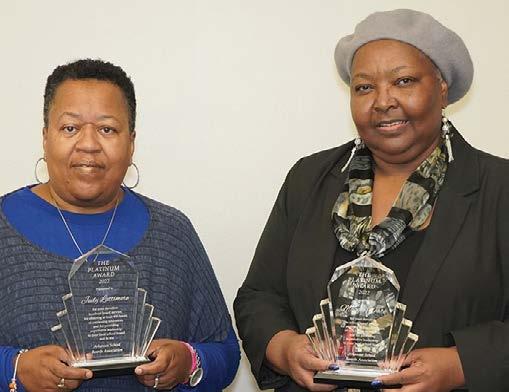
Mentor teachers are paid $275 per new teacher per semester if they get a release period and $425 per semester per teacher if they work on their own time. For the mentors, it was not just about the money.
“They remembered what it was like to be a new teacher, and they’re also wanting less turnover in their department,” Lowery said. “They just wanted to help keep teachers here. One teacher said, ‘I hate to make friends and lose them in just a couple of years,’ so that was her motivation.”
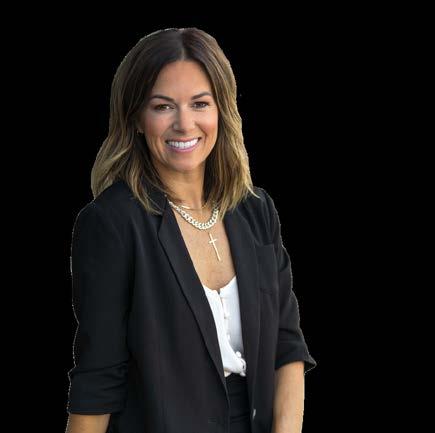

Lowery said connecting teachers to the community was a critical part of the program. Teachers not from the area would go home every weekend and end up staying with the district only a couple of years. To combat that tendency, Lowery asked the community to adopt new teachers by sending them notes, gift cards and goodies. One mentor obtained teacher discounts and incentives from local businesses. The local hospital fed all the teachers at the beginning of the year. The Arts Center gave the Continued on next page
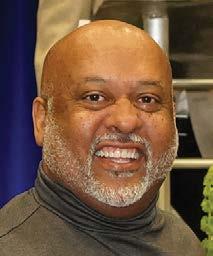
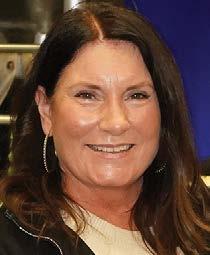
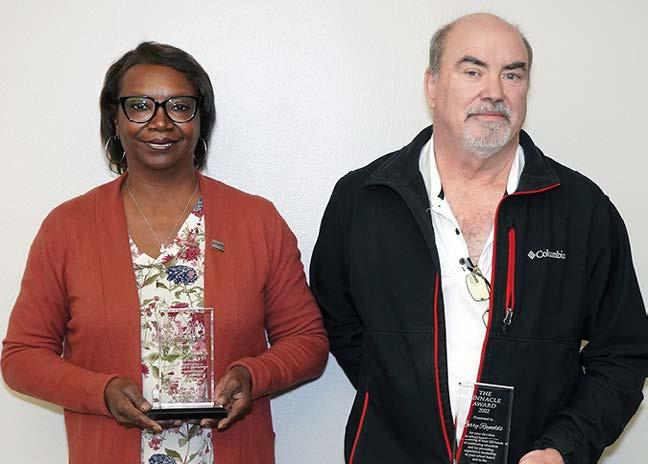
“Client satisfaction and strong relationships are not just things we say, our company’s success is founded on it. Partner with us on your next project and we’ll see it through to successful completion!”
ASBA Annual Conference

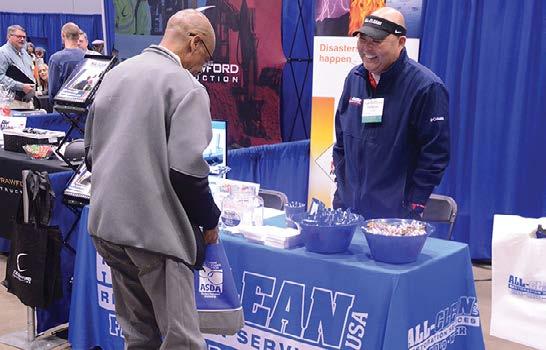
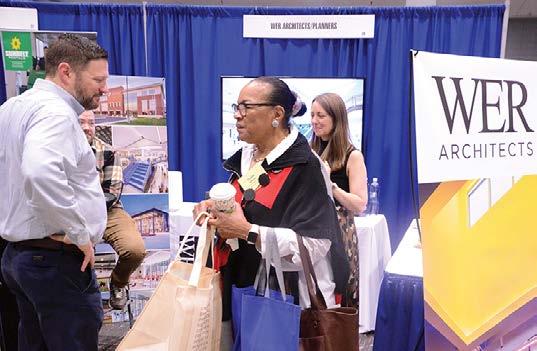
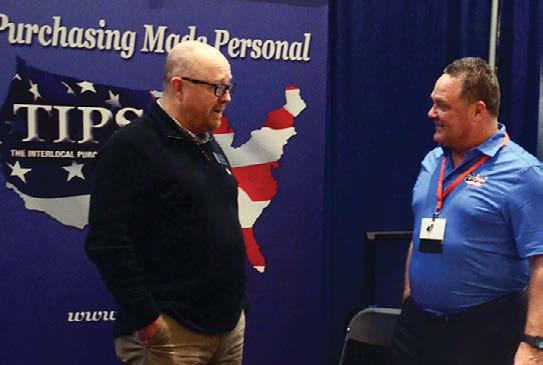

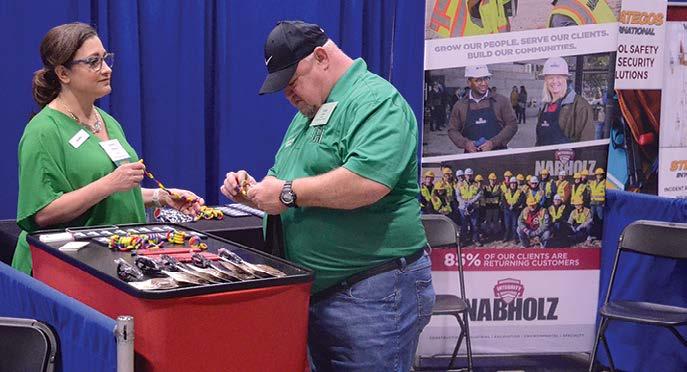
EXHIBITORS. Top left, Brock Cline with Nabholz visits with Greg Coats with the Hoxie School Board. Second row left, Danny-Joe Crofford with All-Clean speaks with a conference-goer. Second row right, John Coleman with Entegrity visits with Keaton Smith with the Fayetteville School Board. Third row left, Michael Johnson with Architecture Plus visits with a conference attendee. Third row right, John Langham, left, Russell Fason and Kate Dimitrova, background, with WER Architects/Planners man the booth while Elaine Sullivan with the South Conway County School Board makes the rounds. Bottom left, Stacey McPherson with TIPS, left, visits with a conference-goer. Bottom right, Steve Anderson with Strategos International visits with Valley Springs Superintendent Kyle Mallett.
new teachers a free membership and free tickets to one of its performances. Churches fed teachers during workshops.
Working with millennials
With schools becoming increasingly desperate to find teachers and millennials becoming the dominant generation in the workforce, what can school districts do to attract them to the profession? They can start by understanding them, said Tyler Tarver, a former teacher and principal who now operates Tarver Academy, an online school resource company.

In an early bird session, Tarver said millennials, classified as Americans born between 1981 and 1996, are the workforce’s most independent generation. Studies have shown they are concerned about their workplace’s ethical and social responsibility, with the following Generation Z, born from 1997 to 2012, even more so. Millennials are likely to push for change in the workforce. They need to feel like they are part of a community and a part of a worthwhile endeavor. They need to be heard and trusted. They tend to want to work fewer hours, and they’re impatient with their career goals. They need a clear advancement plan and an opportunity to participate in activities that promote personal growth. Administrators should ask them where they want to be in five years, and then help them start to get there.

“If we’re not something people either feel purpose to work for or enjoy working for, they’re going to go somewhere else, because they have options,” he said.
Tarver said school districts need a good internet presence to attract millennials. They should post often and tell their positive story. More people, after all, will see their website than their school building. Schools’ social media efforts reflect what they care about. A site that brags about the district’s teachers demonstrates to a potential recruit that the district values them.
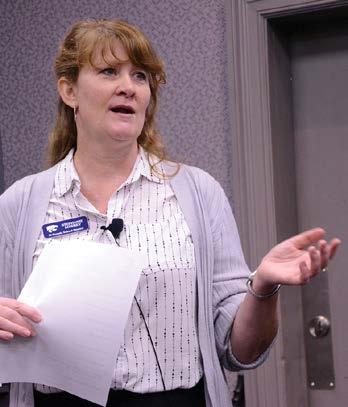
Millennials are annoyed by inefficiency and don’t like their time to
Continued on page 27
ASBA Annual Conference


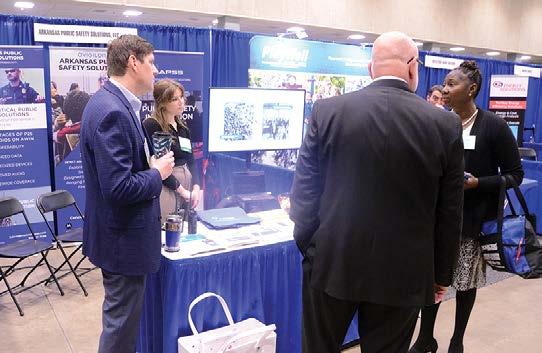
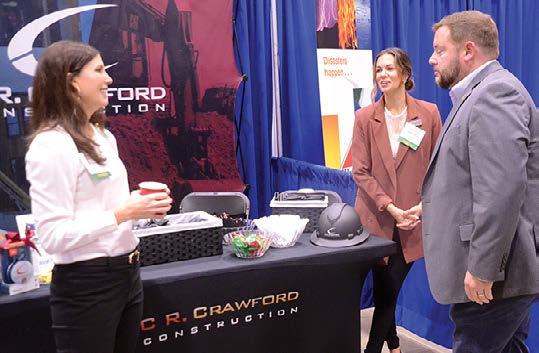
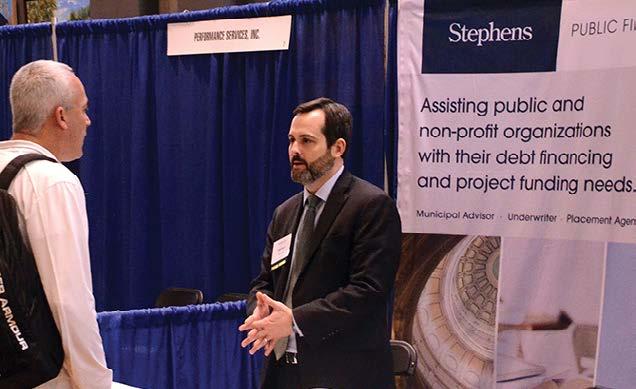
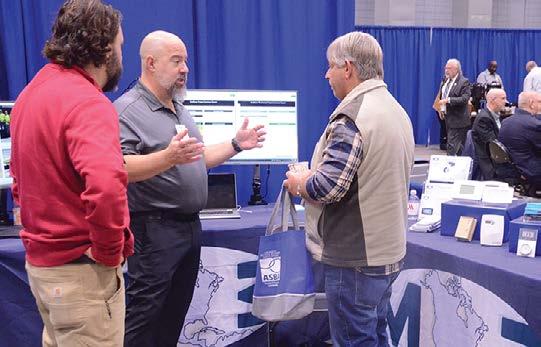
MORE EXHIBITORS. Top left, Michael McBryde with Stephens visits with Brookland School Board member Brandon Sutton. Second row left, Chris Lankford, right, with Modus Studio talks with Al Larson with the Eureka Springs School Board. Second row right, Jean Mouton, left, and brother Alex Mouton describe Mouton 3 Services to a conference attendee. Third row left, Bill Birch with Cadence Insurance visits with Danny Samples, Palestine-Wheatley superintendent, while ASBA’s Shannon Moore looks on. Third row right, Becky Gosnell, left, and Leigh Anne Showalter with C.R. Crawford visit with Jordan Price, Ozark assistant superintendent and athletic director. Bottom left, Steven Greathouse and Bri Davis with Arkansas Public Safety Solutions visit with two conference goers. Bottom right, Drew Williams with Baldwin & Shell visits with Searcy County School Board member Talitha Hardin with Jacob Spears, left, and Cody Yeoman in the background.
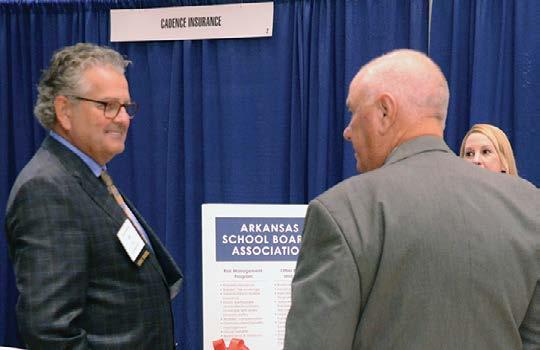
be wasted, so schools should avoid unproductive routine meetings. School districts must ask if activities are necessary and if they are making the district better. If the answer is no to both, those activities should be dropped. Otherwise, they should be made more efficient. He said schools should let millennials wear jeans, because certain battles aren’t worth fighting and sometimes little things can go a long way.
“Let’s listen to them, figure out if anything they’re saying is a good point or a good idea, and then apply it when we can,” he said.
Members of Generation Z, meanwhile, are ambitious, sensitive and vocal. Like millennials, they expect companies to reflect their values. They’re multitaskers, they expect a seat at the table, they’re ambitious and entrepreneurial, and they don’t particularly value experience. They have short attention spans but pick up on new developments quickly. They won’t show respect unless it’s shown to them. Tarver said schools must reconsider what they are teaching a generation that can find anything on the internet. Instead of emphasizing the ability to memorize, educators should develop students who can interpret a website.


In another breakout session, Brookland security officials described how they created a command center where every part of the district can be monitored. Doug Formon, director of security, said the district started with an empty room in July and now has a command center with 10 TVs tied to 140 active cameras. It was constructed relatively cheaply. Formon said each 65-inch TV cost $228 for the district to buy, and a school can get these donated by members of the community.
“This is a very, very simple thing to put together. If you have an empty room somewhere, this can happen,” he said.
EAST lab students are mapping the entire campus in 3-D. If the security team has to send a school resource officer to a location, the incident could be pulled up on a map, with the information shared with responding agencies. Students who work in the operations center will give security personnel a heads-up about an expected fight planned for a particular location. Security personnel can keep an eye on that area via camera and can head off the fights when they see students gathering. The number of physical altercations in the junior high and high schools has dropped because personnel can stop them before they happen. Jeff Pressley, school safety coordinator, was watching the stands via camera during a football game and noticed a man was having a seizure, so he called the ambulance.
In the general session Thursday, Dr. Phil Gore, a former Seattle school board member who now is director of board services with the Vermont School Boards Association, tied school board
Continued on next page service to his mountain-climbing experiences. Mountain climbing taught him about discipline, vision, focus and completing things. He said he didn’t graduate from college until he was 36 years old even though he had attained fiveand-a-half years of college credit. He climbed his first mountain, Mt. Rainier, at age 39. It took him a year and a half to get in shape. He had to figure out what he needed while knowing he didn’t have unlimited resources, so he had to operate within a budget. On the climb up, he and his partner got caught in a blizzard, so they used what they had to survive. Believing they would die if they went to sleep, they stayed awake by consuming hot tea and chocolate espresso beans. Indeed, two other men died that day. After that experience, he knew he had to try to climb the mountain again soon, so he went with a guide service. It took courage, persistence and openmindedness. He was a conservative pastor, while one of his fellow climbers was a San Francisco liberal, but they climbed the mountain together because they all remained fixed on a single goal.
The same is true for school boards.
“When the main thing stays the main thing, you can do it,” he said. “When the main thing is about children and their success and their future, people from all walks of life can effectively serve on a school board and make a difference for each and every child. But if you got on a school board because of one issue, one agenda, you need to either get over it or get off. If you got on a board recently because of whether to mask or not mask, what are you going to do now?”
Gore said whether climbing a mountain or serving on a school board, individuals are roped together with people they may not know well and may not like. In a rope team, one person can misstep and take down the whole team. The same can happen on a school board if one person makes the wrong step. Gore said mountain climbing taught him to communicate, have vision, adapt, and have courage. The collective wisdom of the group matters. Focus and goals are important.
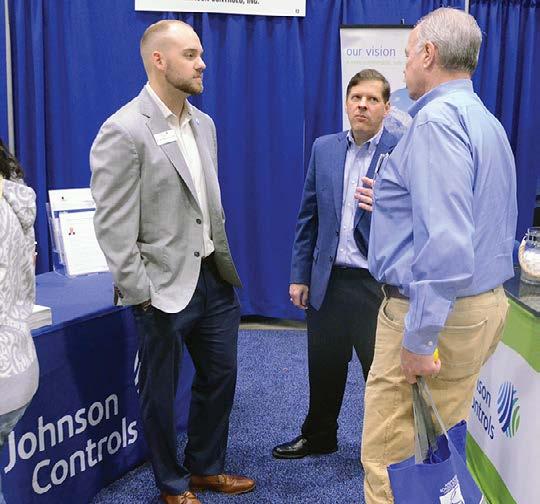
“Your students need you to have clear and specific goals for where you’re going,” he said. “If you’re not sure, head that direction and figure it out as you go. You know the direction you need to go: Get more kids’ reading comprehension at grade level for every grade. So don’t worry about all the excuses for why you wouldn’t set a third grade reading comprehension goal because of the eighth graders and third graders and the science class and art teacher. All that’s just noise. Figure out with your board where you want to go and head that direction, and the closer you get to your goal, the more clear the goal will become.”
In a Friday morning session, thenSecretary of Education Johnny Key told attendees that the purpose of the country’s school system is academic outcomes for students.
He said he had attended along with ASBA’s Dr. Tony Prothro a training about effective school board governance provided by the Education Commission of the States and the Council of Chief State School Officers. A message often repeated there was, “Student outcomes do not change until adult behavior changes.” He listed examples of both in Arkansas. The state’s number of certified computer science teachers increased from fewer than 50 in 2015 to nearly 800 now, while the number of students enrolled in the classes increased from roughly 500 to almost 24,000. He said he was asked about Arkansas’ computer science achievement at “any national event that I attend.” Likewise, he noted that since 2017, 25,000 teachers in grades K-6 had completed the state’s Reading Initiative for Student Excellence Academy, which is based on the science of reading and shifting how students are taught to read. Another 24,000 teachers in the rest of the system have gotten awareness training in the science of reading so they can spot when a study has gaps. He said Arkansas is one of only 12 states where students in all counties were receiving books through the Dolly Parton Imagination Library. In 2019, an average of about 30,000 young people were receiving books monthly.

DR.
Chapel is this year’s winner of
Award for outstanding service to education. Boone worked 32 years as an educator and has been a board member for the last 20 years. After attempting to do so in 2006 and 2007, she succeeded in having the district allow all faculty and staff to observe the Dr. Martin Luther King Jr. Holiday. This year, she played a crucial role in the district passing a 5.7-mill increase to build a new high school. ASBA has been presenting the Dr. Dan Award since 1993. It was created to honor Pilkinton, who was ASBA’s first executive secretary and who continued to serve the association after his retirement, particularly in the areas of state governmental affairs and legislation. Photo by Life-
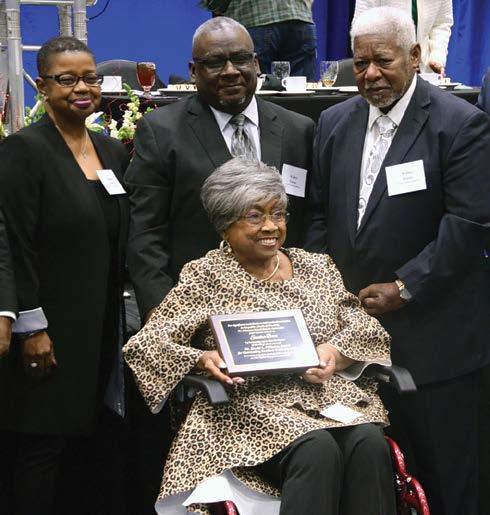
Now, thanks to grant funds, partnerships and local fundraising efforts, more than 73,500 children ages birth to 5 are receiving the books each month with their names on the envelope.
Key said work remains to be done, including improving outcomes for students with disabilities. Arkansas has one of the highest graduation rates for students receiving special ed services but one of the lowest outcomes overall in reading and math. Adult behaviors therefore need to change, including by incorporating more inclusive practices where students receive more core instruction in a regular classroom with support. He said Grace Hill Elementary School in Rogers, Evening Star Elementary School in Bentonville, Calico Rock, and Hot Springs Main Street Visual and Performing Arts Magnet School have all had success in this area.
He said inclusive classrooms benefit both students with special needs and other students as well.
“If … the message to your staff from principals, superintendents, board members, is, ‘Yeah, we’re doing inclusive practices next year because the state says we have to, if that’s the reason that you’re communicating, that is the wrong reason,” he said. “You need to do it because it’s what your students need. It is what is going to drive stronger student outcomes for all students.”
Key encouraged his December audience to pretend for a moment that there would be no legislative session in 2023, and that their budget would remain the same. Keeping in mind that student outcomes don’t change until adult behavior changes, he asked what adult behaviors need to change.
Another Friday speaker, Mike Harbour, president of Harbour Resources and an Army veteran, said great leadership exists in the midst of common cause, common ground and uncommon excellence. He said that after COVID, people have “challenge fatigue.” Leaders must recognize this and change how they think and communicate. With teachers leaving the profession, leaders must consider how they will support their staff and how they will communicate a positive message. For leaders to be heard and listened to, they should approach their audience with open hands and open ears.
“If our common cause is the same, then it’s much easier to step back and say ‘OK, let me listen. Let me learn,’” he said. “When I listen and learn, then I can lead. Or I can just say, ‘OK, I’m going to use my leverage. I’m a powerful voice. I’m loud. I’ve got this position of school board leader.’
“I can step into that. I can use my leverage to lead, but then all I do is continue to break trust. No one wants to see me coming.”
The Annual Conference concluded with a legislative panel discussion with Rep. Brian Evans, R-Cabot, chair of the House Education Committee; Sen. Jane English, R-North Little Rock, Senate Education chair; Rep. Carlton Wing, RNorth Little Rock; and Sen. Greg Leding, D-Fayetteville.









